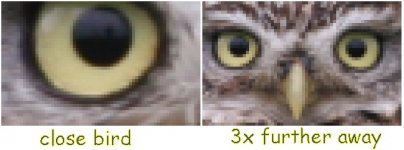Tannin
Common; sedentary.
Andy Bright said:... covered myself in case the new Swaro zoom didn't need refocusing after a big change in magnification... i can't remember either. I've seen instruction manuals where it says zoom up to 60x, focus and everything will be fine at other zoom positions... HA!!
This does work on my (new style) Swaro, Andy. Of course, I don't know if it applies to all of them, but it certainly does to mine. Works a treat. My assumption is that all the new style Swaro 20/60 EPs would be identical, but that is just an assumption.
Tony




